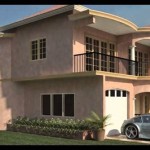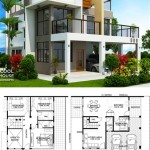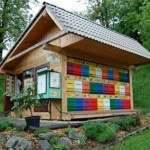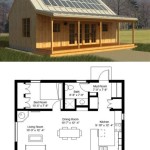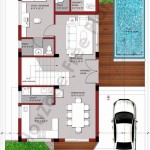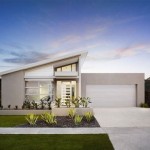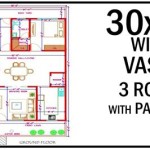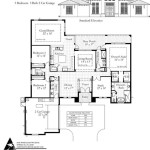Schröder House Site Plan: A Study in De Stijl Principles
The Rietveld Schröder House, a UNESCO World Heritage site, stands as a testament to the De Stijl movement's principles. Completed in 1924 in Utrecht, Netherlands, the house's innovative design transcends mere aesthetics, embodying a philosophy that sought to harmonize art, architecture, and life itself. Understanding the Schröder House site plan is crucial to appreciating the dynamic interplay of space, form, and function that characterizes this iconic structure.
The site plan reveals a relatively compact plot within a traditional row house setting. This context is significant as it highlights the house's revolutionary departure from the established architectural norms of the time. While neighboring structures adhered to conventional layouts, the Schröder House boldly embraced open planning and flexible spatial arrangements.
The house's orientation on the site maximizes natural light penetration. Facing predominantly south and west, the large windows and balconies capitalize on sunlight, a key element in De Stijl's pursuit of lightness and transparency. This orientation also fosters a connection with the surrounding environment, blurring the lines between indoor and outdoor spaces.
The ground floor, while initially conceived with more traditional partitioned rooms, reflects the evolving needs of the client, Mrs. Truus Schröder-Schräder. She desired a living space that could adapt to various functions and accommodate both private and communal activities. The site plan demonstrates how the architect, Gerrit Rietveld, responded to this by incorporating sliding partitions that allowed for the transformation of the ground floor into a single, flowing space.
The first floor exemplifies the De Stijl principles of open planning and spatial dynamism. Referred to as a "spatial composition," this level eschews fixed walls in favor of movable panels and sliding partitions. These elements enable the configuration of the space into various zones, accommodating changing needs and fostering a sense of fluidity and adaptability. The site plan illustrates how these partitions define, yet do not confine, the different areas designated for sleeping, studying, and other activities.
A key feature of the first floor is the interplay between interior and exterior space. Balconies and large windows extend the living area outwards, creating a seamless transition between the house and its surroundings. This connection with the external environment reflects the De Stijl emphasis on integrating architecture with nature.
The use of color is integral to the Schröder House's design, both internally and externally. The site plan, while not explicitly depicting the color scheme, provides a framework for understanding how the vibrant primary colors – red, yellow, and blue – along with neutral tones like white, gray, and black, articulate the architectural elements and define spatial relationships. These colors, applied to surfaces and structural components, highlight the interplay of planes and volumes, further emphasizing the De Stijl principles of abstraction and geometric purity.
The Schröder House site plan also reveals the integration of functional elements within the overall design. The location of the staircase, for instance, is not merely a practical consideration but a carefully orchestrated architectural element that contributes to the spatial dynamism of the interior. Similarly, the placement of windows and balconies is strategically designed to optimize light and views, seamlessly blending functionality with aesthetic considerations.
The garden, though modest in size, plays a significant role in extending the living space beyond the confines of the house. The site plan illustrates how the outdoor area is conceived as an integral part of the overall design, complementing the interior spaces and further blurring the boundaries between inside and outside. This integration with the natural environment reinforces the De Stijl philosophy of harmonic coexistence between architecture and nature.
Studying the Schröder House site plan offers valuable insights into the architectural vision of Gerrit Rietveld and the principles of the De Stijl movement. It reveals how the design transcends mere functionality, embracing a holistic approach that integrates space, form, color, and the surrounding environment to create a dynamic and adaptable living space. The plan serves as a blueprint for understanding how these principles translate into a built form, showcasing the innovative spirit and enduring legacy of this architectural masterpiece.
The compact nature of the site further emphasizes the ingenuity of Rietveld's design. He maximized the limited space by creating a multi-functional and adaptable living environment. The site plan demonstrates how he achieved this through the strategic placement of walls, partitions, and openings, creating a dynamic interplay between interior and exterior spaces.
The Schröder House remains a powerful example of how architectural design can reflect and embody broader philosophical and artistic principles. The site plan provides a crucial starting point for understanding the complex interplay of factors that contribute to the house's enduring significance as a landmark of modern architecture.

Ad Classics Rietveld Schroder House Gerrit Archdaily

Ad Classics Rietveld Schroder House Gerrit Archdaily

Art Now And Then Rietveld Schroder House

As The Cube Became A Box Designblog

Autocad Drawing Rietveld Schroder House In Utrecht Ground Floor Dwg

Rietveld Schroder House Plan Ev Planı Mimari Evler

Plans Of Architecture Schroder House Rietveld Floor

Unesco World Heritage Centre Document Rietveld Schröderhuis Map Of Inscribed Property

My Architectural Moleskine Gerrit Rietveld SchrÖder House

Schröder House Plan

